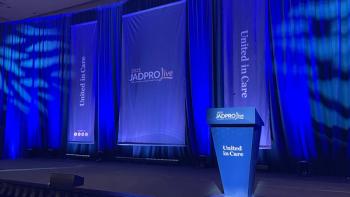
Linking Mechanism of Action to Safety Profiles in mCRC Treatment

Gabriel Schwartz, MSN, NP, explains how mechanisms of action determine the safety of systemic treatments in metastatic colorectal cancer post chemotherapy.
Systemic treatments for metastatic colorectal cancer following standard chemotherapy vary by mechanism of action, thereby affecting safety profiles, explained Gabriel Schwartz, NP, MSN. After moderating a Case-Based Roundtable on this subject, Schwartz described how these difference can inform treatment decision-making in an interview with Oncology Nursing News.
Because fruquintinib (Fruzaqla) and regorafenib (Stivarga) are both VEGF inhibitors, key adverse effects (AE) include hypertension and proteinuria. Conversely, trifluridine/tipiracil (TAS-102; Lonsurf) serves as an anti-metabolite, which puts patients at a greater risk for cytopenias.
Transcript
With fruquintinib and regorafenib, their mechanism of action is relatively similar. Fruquintinib is a second-generation TKI. Regorafenib is often thought of as being a first-generation TKI, and for both fruquintinib and regorafenib, one of the primary mechanisms of action is as a VEGF inhibitor.
Regorafenib has other mechanisms of action as well, whereas fruquintinib is primarily just a VEGF inhibitor. As far as thinking about those therapeutic considerations with these particular drugs, a lot of the adverse effect profile and the efficacy come down to that VEGF mechanism of action.
When we’re thinking about appropriate patients for fruquintinib—and, for that matter, regorafenib as well—we’re thinking about the adverse effects that can come from these agents, things like hypertension and proteinuria. When we’re thinking about appropriate patients, we’re bearing that in mind.
On the flip side, we have TAS-102. Although, from the conversation, it seems that increasingly it is being used in combination with bevacizumab. We just have a substantially different mechanism of action [with TAS-102].
This is a more of an anti-metabolite mechanism of action, specifically the TAS-102, and because of that different mechanism of action, we see that there’s a different adverse profile, especially with cytopenias being one of the dominant adverse reactions. Because of these different mechanisms of action, as well as the different clinical trials and results from these trials, arriving at an appropriate decision for a given patient is a combination of the patient’s clinical status as well as their goals and specific patient characteristics: things like distance to a treatment center, social supports, and access to care.
This transcript has been edited for clarity and conciseness.
Know an oncology nurse who goes above and beyond? Nominate them for the 2026 Extraordinary Healer® Award! Submit a 250+ word essay by January 7, 2026, to celebrate their exceptional care. Finalists will be honored at a special ceremony with a celebrity keynote at ONS 2026 in San Antonio. Submit your nomination:
Newsletter
Knowledge is power. Don’t miss the most recent breakthroughs in cancer care.


















































































